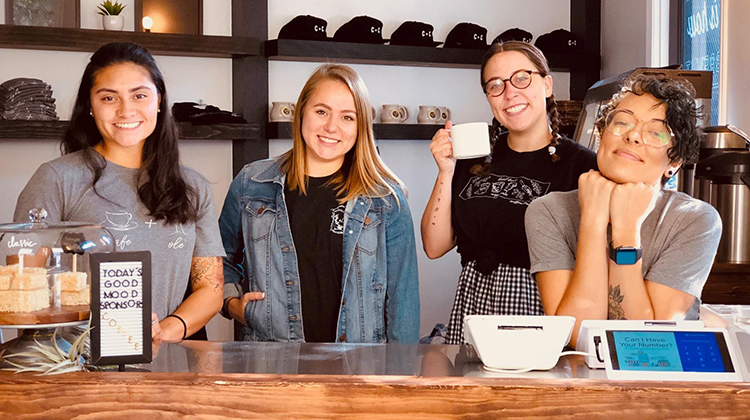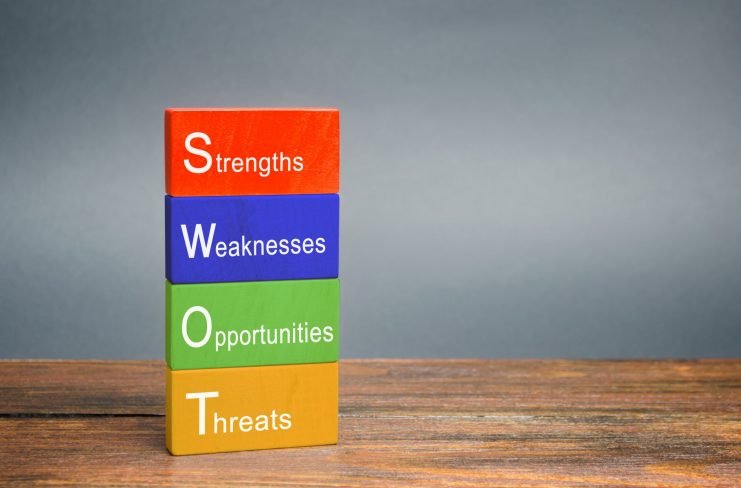
Start-Up Event Collective Pivots and Wins with MPOWR Envision [watch video!]
November 10, 2020
The Strategy Game While Sheltering In Place
November 10, 2020Scenario-Based Planning – Now is Exactly the Time to Work on Strategy

Your state is opening at the end of this month…no, the end of next month.
Your friend who lives on the eastern seaboard says, “We’re starting at the end of June.”
Your cousin who works in the tech world in San Francisco remarks, “We’re not opening until at least the first full week of June.”
So what’s going on? Well, it’s clear that the only thing that’s certain is that nothing is certain. Which begs the question, how in the world are we supposed to craft strategy now, in these times when everything is so…up in the air? Isn’t strategy predicated on the fact that we know certain things will stay the same; things like having an aggressively competitive market, committing to specific initiatives with available capital, selling to customers who have the cash to pay our invoices? When you aren’t sure of the basics of doing business, how in the world do you work on your strategy? How do you get your team to focus on the future when you have no idea what the rules will be?
Well, if you consider that strategy is the art of visioning a future and taking the steps to ensure you reach your vision, it makes it even more important to craft a solid one now. Especially because the rules have changed so drastically, formulating strategy is critical as we are faced with the need to quickly adapt.
Watch the Discussion Below:
One of the many tools out there to help you keep your options open when formulating strategy is scenario-based planning. It’s a technique that asks the planning team to outline several different future circumstances, envisioning the best and worst-case scenarios and the responses your organization will take in each of those cases. You can make it as analytical or as gut feel as is appropriate for your organization. In addition to imagining possible futures, it allows you to create thoughtful plans (as opposed to immediate reactions which can often be misguided) for what your response will be. Your organization can then build or respond with the capacity that it has when the specific scenario occurs.
A real-time example of shift and pivot happened in the restaurant industry when many with a dining room shifted to take-out to keep their business operating and at least some of their people employed. If you were to do scenario-based planning at a high-end restaurant, one where the dining experience (sitting at the table, being waited on, having a wine list, etc.) was part of the reason the plates were so expensive, what might you start with that would help keep your business alive?
Here are just a few possibilities:
Scenario A – Dining-in restaurants will not be allowed to open until July 1
Scenario B – Dining-in restaurants will not be allowed to open until January 2021
Scenario C – Dining-in restaurants must cut their capacity in half when opening on July 1 in order to comply with social distancing requirements
The first thing to do is to outline what adjustments you would have to make irrespective of which scenario would happen. Those are your base adjustments. Then move from there to how your responses would change and what are the best and worst cases. Data to apply to this might be what have people been ordering since you shifted to take out? Ask for feedback from your customers. What have they liked and what haven’t they liked with regards to things like food quality, presentation, delivery? How can you add extra value to help keep your margins closer to in-room dining? Look at your whole business: customer retention, financial health, employee health and safety, products offered, value-added opportunities.
In the scenario of the opening but cutting the number of tables in half, how will that affect your profitability? How can you add value others haven’t thought of? Can you get curtains between the tables that allow for protection and also create a nice sense of privacy for your diners? Open up your thinking to ask what is possible that will allow you to operate in a new scenario.
This is just one example but if you look at the structure of scenario-based planning, it is applicable to any organization that needs to apply a flexible lens to its future.
The second dimension to add to the real need to plan out an adaptable vision is to be able to do this with a remote team. How do we brainstorm, discuss, and plan with our computers?
Video isn’t ideal but it’s the best we’ve got and right now, it’s even more important when you are trying to ‘see’ what people are thinking. There are a variety of different platforms that are free and open to groups of all kinds.
Is Your Business Strategy Inoculated?
Ensure before you begin your call that you have a goal in mind for each session and that you make sure each person on the call is able to speak. You might have to make sure you call on everyone in a more deliberate fashion but getting everyone’s perspective adds to the robustness of your ideas.
Plan out a series of calls and corresponding goals on the way. Make sure you discuss all aspects of the business: employee health and safety, customer satisfaction, unmet customer needs, new areas to add value, financial position and health, operations, and any other area that needs adjustment during this time. Above all, make sure you communicate concern for your employees and look out for their well-being. Not everyone is adjusting to this new situation. Keep your eye on those who feel disconnected. Your employees will be the most critical part of helping you pull through these unusual times and come out on the other side. Pay attention to where they are and how you can help.
In addition to having a set of goals for each call and getting ideas from your team, you can also show them while you are brainstorming what the team is coming up with using on-line whiteboards and flip-charts. Again, there are a variety of different applications to do this and many are low-cost or no-cost depending on what you need. Do a search to find the one that’s best for you.
Once you’ve video conferenced with your team and you have their ideas and you understand their perspectives and you’ve thrown their ideas up on a virtual platform for everyone to see, your next step is to communicate your plan. Again, there are a variety of different templates out there. Gartner has a few resources and also reviews different platforms in order to give you an overview of the pros and cons. That’s one idea but there are many more.
The most important thing to do in all of this is to stay positive. View this as an opportunity for creativity and the exploration of new ideas. If you are leading a team, ensure they feel a part of this shift and are being included in helping to make your organization a success.
Our new future is just around the corner.
Stay healthy, focused, and hopeful!



